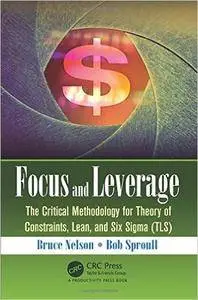Bruce Nelson, "Focus and Leverage: The Critical Methodology for Theory of Constraints, Lean, and Six Sigma (TLS)"
English | ISBN: 1498746039 | 2016 | 376 pages | PDF | 7 MB
English | ISBN: 1498746039 | 2016 | 376 pages | PDF | 7 MB
Most books about continuous and process improvement are written in a textbook format with straightforward information and plenty of graphs and charts to convey the points being made. Sometimes, even the best step-by-step instructions can escape even the most adamant of followers for an improvement method in determining exactly how to apply what they’ve learned.
Taking a different approach, Focus and Leverage is presented in an engaging business-novel format and is a sequel to the authors’ bestselling book, Epiphanized, Second Edition. The primary characters remain the same, but this time the storyline features two different industries: Maintenance, Repair, and Overhaul (MRO) and Healthcare (hospital) environments.
This book expands and highlights the two improvement methods first introduced in the appendix section of Epiphanized: the Interference Diagram (ID)/Intermediate Objectives (IO) map (ID/IO Simplified Strategy) and Multiple-Drum-Buffer-Rope (M-DBR).
Both of these innovative methods are the result of some much-focused thinking that allows for multiple improvement methods, and steps, to be combined into a single thinking process tool. This groundbreaking new method is designed to save time and money and allows faster and better results to be achieved.
The two storylines move the reader through the necessary system analysis, problem identification, and solution implementation. The novel format aids in presenting several realistic situational discussions as well as a multitude of graphs and figures to explain the step-by-step process for success.
The storyline of this book weaves some well-known and some not-so-well-known thinking tools into the problem-solving sphere to provide you with an understanding of how to first discover and then overcome issues not readily known or expected at the start of any project.



